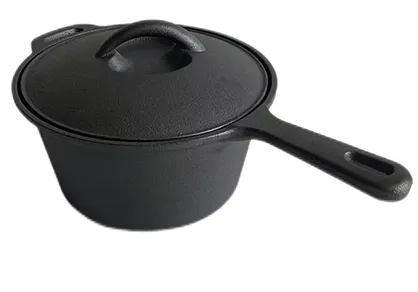
Selecting the Best Cast Iron Dutch Oven for Your Cooking Needs
The Timeless Charm of Cast Iron Dutch Pots
In the world of culinary tools, few items are as revered as the cast iron Dutch pot. This versatile cooking vessel has been a staple in kitchens for centuries, beloved not only for its functionality but also for the rich tradition and history it carries. Whether you’re a seasoned chef or a casual home cook, understanding the benefits and uses of a cast iron Dutch pot can enhance your culinary experience significantly.
History and Heritage
The origins of cast iron cookware date back to ancient China, where cast iron was first invented. However, the Dutch oven—the term most commonly associated with the cast iron Dutch pot—traces its roots to Europe in the 18th century. Dutch ovens were primarily utilized for slow-cooking stews and meats over an open flame, making them a favorite among both professional chefs and amateur cooks alike. The design of these pots, with their thick walls and tight-fitting lids, allows for excellent heat retention and moisture control, essential for creating tender, flavorful dishes.
Why Choose Cast Iron?
Cast iron Dutch pots are unique because they boast remarkable cooking properties. Unlike other materials, cast iron distributes heat evenly, reducing the risk of hot spots that can lead to burnt food. This even heat distribution makes it ideal for a variety of cooking techniques, from searing meats to slow-braising vegetables.
One of the most significant advantages of cast iron is its incredible heat retention. Once heated, a cast iron Dutch pot can maintain a consistent temperature for an extended period, which is perfect for dishes that require long, slow cooking. This feature is particularly beneficial for hearty meals such as braised short ribs or rustic casseroles, where deep, complex flavors are developed through gradual cooking.
Furthermore, cast iron cookware is incredibly durable. With proper care, it can last a lifetime and even be passed down through generations. Many cooking enthusiasts find that the flavor improves with each use as the pot develops a natural seasoning layer. This seasoning not only enhances the taste of food but also provides a non-stick surface, making cooking and cleaning easier.
cast iron dutch pot

Versatility in the Kitchen
The versatility of a cast iron Dutch pot is unmatched. It can be used on the stovetop, in the oven, and even over an open flame, making it an excellent choice for both indoor and outdoor cooking. From baking bread to simmering soups, the possibilities are endless. Home chefs can also prepare one-pot meals, reducing cleanup time, which is a significant advantage for those with busy lifestyles.
Moreover, the cast iron Dutch pot can transition seamlessly from stovetop to table. Its rustic aesthetic adds a charming touch to any dining experience, allowing you to serve directly from the pot. This not only minimizes dishware but also encourages a communal dining atmosphere, where everyone can share in the goodness of homemade meals.
Caring for Your Dutch Pot
To keep your cast iron Dutch pot in optimal condition, proper care is essential. Always clean it using mild soap and a soft sponge, avoiding abrasive materials that can damage the seasoning. After washing, dry it thoroughly and apply a thin layer of vegetable oil to prevent rusting. With these simple steps, your Dutch pot can continue to provide delicious meals for years to come.
Conclusion
The cast iron Dutch pot stands as a testament to timeless culinary traditions. With its unparalleled heat retention, durability, and versatility, it’s no wonder that this essential kitchen tool has endured through the ages. Whether you’re crafting a family recipe or experimenting with a new dish, a cast iron Dutch pot is an invaluable asset, promising to elevate your cooking and enrich your dining experience. Embrace the charm of this classic cookware, and discover the joy of creating delicious meals that bring family and friends together around the table.
-
Season Cast Iron Perfectly with GPT-4 Turbo TipsNewsAug.01,2025
-
High Quality Cast Iron Cookware - Baixiang County Zhongda MachineryNewsAug.01,2025
-
Premium Cast Iron Pan: Durable & Perfect HeatNewsAug.01,2025
-
High Quality Kitchen Durable Black Round Cast Iron Cookware Pancake Crepe Pan-Baixiang County Zhongda Machinery Manufacturing Co., Ltd.NewsAug.01,2025
-
Cast Iron Cookware - Baixiang County Zhongda Machinery | Nonstick, Heat ResistanceNewsAug.01,2025
-
High Quality Kitchen Durable Black Round Cast Iron Cookware - Baixiang County Zhongda Machinery | Non-Stick, Heat Retention, DurableNewsJul.31,2025


